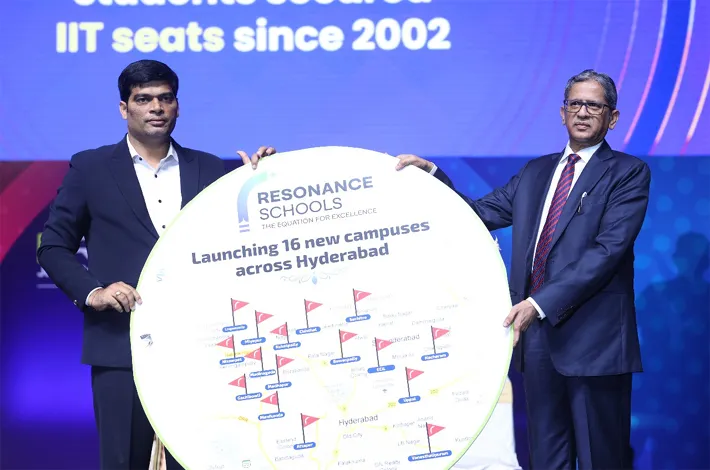Right to Education act in India: Decade of progress and persistent challenges
15-11-2025 12:00:00 AM

The Right of Children to Free and Compulsory Education Act, 2009 (RTE Act) marked a landmark moment in India's educational landscape. Enacted on August 4, 2009, and effective from April 1, 2010, it placed education as a fundamental right under Article 21A of the Constitution, inserted via the 86th Amendment in 2002. The Act mandates free and compulsory education for children aged 6 to 14 in neighborhood schools, aiming to bridge socio-economic disparities.
Proponents hailed it as a step toward universal elementary education, while critics viewed it as an ambitious but under-resourced mandate. Over 15 years later, the RTE's evolution reflects India's complex journey toward educational equity. The 1993 Unnikrishnan judgment by the Supreme Court recognized education as a fundamental right under Article 21 (right to life), but it was limited to children under 14 and not enforceable against private schools.
The turning point came with the 86th Constitutional Amendment in 2002, adding Article 21A and modifying Article 45 to focus on early childhood care up to age 6. The RTE Act operationalized this in 2009, including 25% reservation in private unaided schools for economically weaker sections (EWS), infrastructure norms (e.g., pupil-teacher ratios, playgrounds), and prohibition of capitation fees or screening. Implementation began unevenly.
By 2013, the Supreme Court upheld the 25% quota in Society for Unaided Private Schools of Rajasthan v. Union of India, exempting minority institutions. Amendments in 2012 extended deadlines for infrastructure compliance, and the 2019 extension allowed states more flexibility. The National Education Policy (NEP) 2020 further aligned RTE with broader reforms, extending its spirit to ages 3-18, though not legally binding yet.
As of 2025, the RTE has enrolled over 250 million children in elementary education, per Unified District Information System for Education (UDISE) data. Gross Enrollment Ratio (GER) at elementary level stands at 98.5%, up from 81% in 2009, with girls' participation rising sharply. The 25% EWS quota has admitted around 2.5 million children annually into private schools, fostering social integration, according to a 2023 Azim Premji University study.
However, disparities persist. Rural-urban divides show urban GER at 102% versus rural 96%, per UDISE 2023-24. Only 12% of schools fully comply with infrastructure norms, per a 2024 CAG audit. Dropout rates hover at 1.5% annually, but transition to secondary level is 92%, indicating leaks. Funding shortages plague RTE. The Act requires 6% of GDP on education, but actual spending is 3.1% (2024 Union Budget).
States like Bihar and Uttar Pradesh struggle with teacher vacancies—over 1 million nationwide, per Ministry of Education 2024 report. Pupil-teacher ratio averages 35:1, exceeding the mandated 30:1.The 25% quota faces reimbursement delays; private schools reportrS 15,000 crore in pending dues since 2014, leading to litigation. A 2023 Delhi High Court ruling mandated timely payments, but enforcement varies. Minority institutions' exemption (upheld in 2014 Pramati judgment) excludes 30% of private schools, diluting inclusivity.
Points of Criticism: Diverse perspectives
Critics from the right-wing argue RTE infringes on private schools' autonomy. The 25% quota is seen as "reverse discrimination," forcing institutions to subsidize without full reimbursement. Shiksha Bachao Andolan's 2023 petition claimed it violates Article 30 (minority rights). Economists like those at Centre for Civil Society label it statist overreach, preferring vouchers for choice.
On the other hand, left-leaning activists criticize underfunding and 25% quota as tokenism masking elite capture of education. Oxfam India's 2024 report highlights how affluent parents game EWS admissions via fake certificates. Teacher unions like AIFTO decry no-detention's repeal as pressuring underprepared students, ignoring socio-economic barriers.Government defenders, including HRD Ministry officials, point to GER gains and Sarva Shiksha Abhiyan's success in building 1.5 million classrooms. NEP 2020's vocational integration is praised for addressing RTE's elementary limit.
The RTE's future LIES on NEP 2020 implementation, proposing extended right to education up to secondary level by 2030. Proposals include public-private partnerships for infrastructure and AI-driven teacher training. A 2025 parliamentary committee recommended capping private fees and linking reimbursements to inflation.
Ultimately, the RTE embodies India's democratic aspiration for inclusive growth. Its evolution from directive to right underscores progress, yet criticisms highlight the gap between law and reality. As India aims for Viksit Bharat by 2047, balancing equity, quality, and autonomy will define education's trajectory. With 260 million children in school, the stakes are immense—success could propel a demographic dividend; failure risks perpetuating inequality.








